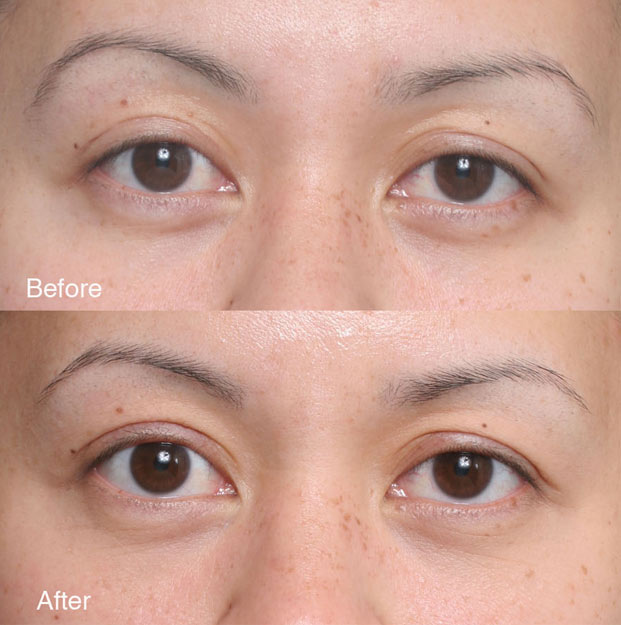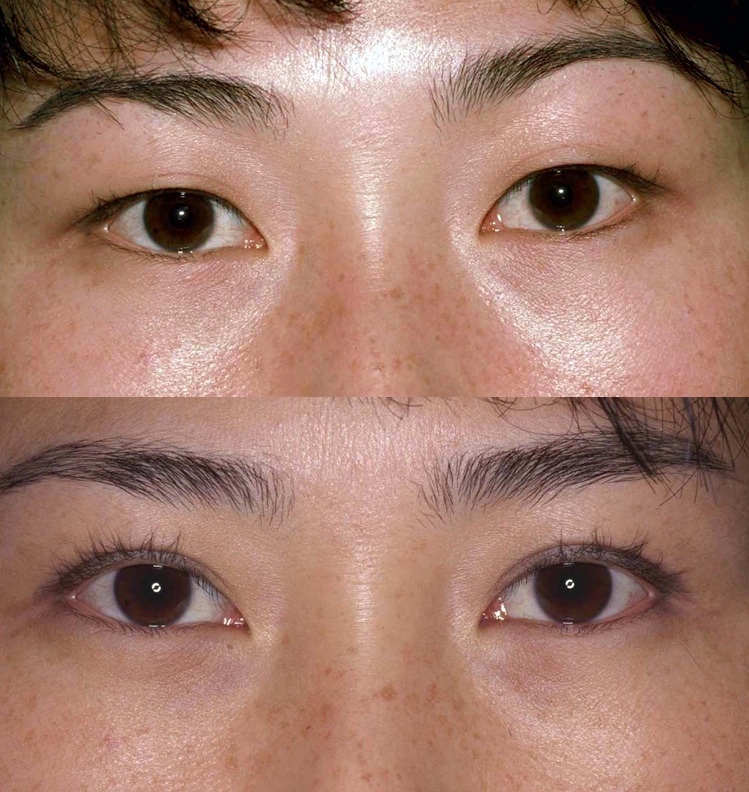Repairing the outcomes of double fold surgery, especially when faced with issues like asymmetry, excessively high creases, or overly thick eyelids requires a nuanced understanding of both the aesthetics and functionality of the eyelid. Double fold surgery, also known as Asian blepharoplasty, is a popular cosmetic procedure aimed at creating or enhancing an upper eyelid crease. While many achieve their desired results, some may experience outcomes that require revision or corrective surgery. This blog delves into the intricacies of addressing these challenges, ensuring individuals are informed about their options for achieving a more balanced, natural appearance.

Understanding the Complications
Complications from double fold surgery can vary from minor aesthetic concerns to more pronounced functional issues. The most common issues include:
- Asymmetry: One of the most noticeable complications, where the creases of the upper eyelids are uneven in height or shape.
- High Creases: Sometimes, the crease may be positioned too high above the eyelid margin where the eyelashes emerge, giving an unnatural appearance or overly exposing the eyelid platform.
- Upper Eyelid Margin Ectropion: Exposure of the waterline from overly aggressive supratarsal fixation.
- Thick Eyelids: Usually due to leaving too much skin and muscle below the upper eyelid crease. Individuals may confuse this for swelling. That notion may be reinforced by the original surgeon who may not understand that the problem is related how the surgeon designed the surgery. The effect is eyelids that look unnaturally thick and heavy.
These complications can result from overcorrection, inadequate planning, or the natural healing process, which may lead to undesirable changes in the eyelid appearance.

Revision Double Fold Surgery: Correcting Asymmetry and High Creases
Revision surgery for double fold eyelids focuses on correcting the position of the crease, adjusting its height, and ensuring symmetry between both eyes. The goal is to achieve a natural-looking crease that harmonizes with the individual’s facial features, respecting their unique aesthetic goals.
- Lowering the Crease: For creases that are too high, revisional surgery requires making a new crease at a lower location, moving the levator aponeurosis to this new crease and advance the orbital fat to this location. In some eyelids, upper eyelid ptosis may need to be corrected at the same time. The reliance on fillers along to provide volume in the sulcus does not correct the crease position.
- Correcting Asymmetry: Asymmetry correction often requires adjusting one or both eyelids to match in height and contour. It is rare that just one eyelid is the issue. Generally both eyelids need to be modified to achieve the best outcome.
Addressing Thick Eyelids
Thick eyelids post-double fold surgery are seldom caused by too much scar tissue. Generally these eyelids have excessive skin and orbicularis oculi muscle left below the upper eyelid crease. This is addressed by repositioning the crease to make a snug upper eyelid platform. If you are told the fullness is from scar tissue—you should be skeptical.
Choosing a Surgeon for Revision Surgery
The success of revision double fold surgery heavily depends on the skill and experience of the surgeon. There really only a handful of surgeons in the world who are successfully offering double fold revisional surgery. Generally this will be an oculoplastic surgeon who devoted their professional activities to almost exclusively revising eyelids. They need broad experience performing revisional Asian blepharoplasty. It is hard for a member of the public to know if a particular surgeon understands the nuances of eyelid anatomy and is sensitive to the aesthetic nuances desired in double fold surgery. Carefully listen to their description of what is wrong and their precise plan of how they will address the issue. If they are not providing this information, you are in the wrong office.
What to Expect During the Revision Process
- Consultation: A detailed discussion about your concerns and goals, along with a thorough examination, will help tailor the surgical plan to your needs. These eyelids cannot be assessed during a zoom consultation. There is no substitute for an in person assessment.
- Surgery: Techniques will vary based on the specific issues being addressed, but the aim is to refine the eyelid’s appearance while ensuring natural-looking results. Listen to the proposed plan and ask yourself if the surgeon knows what they are talking about.
- Recovery: Recovery times can vary; however, most patients can expect some swelling and bruising for the first few weeks. Following your surgeon’s post-operative care instructions is crucial for the best outcome. These eyelids can hold swelling for an extended period of time before settling down. This can make the crease look high. Dr. Steinsapir advises that it can be even 2 or 3 months and rarely longer before the swelling resolves and is normal.
Conclusion
Revision surgery for correcting asymmetry, high creases, or thick eyelids after double fold surgery offers a pathway to achieving the balanced, natural-looking eyes that patients initially sought. While the prospect of undergoing another procedure can be daunting, advancements in techniques and a deeper understanding of Asian eyelid anatomy have significantly improved outcomes in revision surgeries. It’s important to approach the revision process with realistic expectations, armed with knowledge and guided by a skilled surgeon. If you’re considering revision double fold surgery, take the time to research and choose a surgeon with the expertise and aesthetic sensibility to meet your goals, ensuring results that not only look beautiful but also feel authentically yours. Your eyes can be your best feature.
Call Dr. Steinsapir now to schedule your service.
About Dr. Steinsapir
Dr. Steinsapir is a board-certified eye surgeon and fellowship trained in oculoplastic surgery and cosmetic surgery in Los Angeles and Beverly Hills where he specializes in balanced facial cosmetic surgery for natural results, with an emphasis on minimally invasive techniques, fast recovery time, and leadership in medical technology. Dr. Steinsapir has a private practice in Beverly Hills and also serves as a volunteer faculty at the Jules Stein Eye Institute, David Geffen School of Medicine at UCLA. Contact us today to learn how Dr. Steinsapir’s can make a difference for you.
